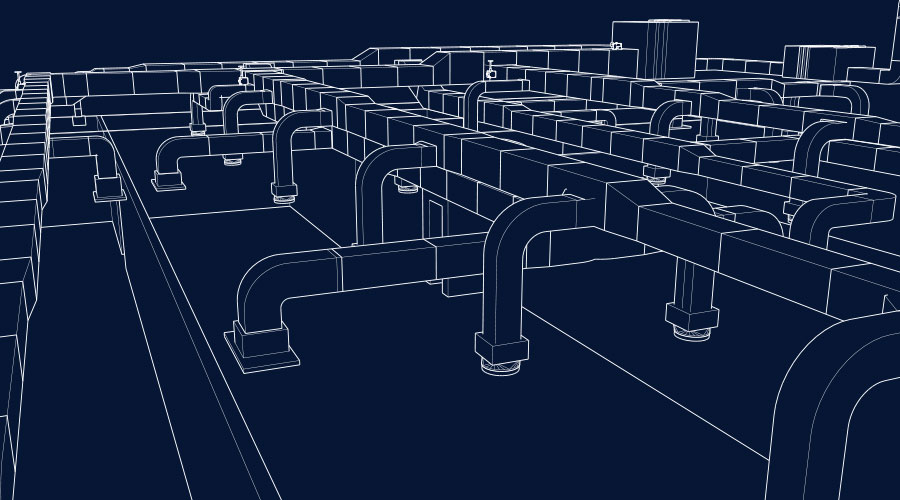BIM: A Better View of Maintenance
OTHER PARTS OF THIS ARTICLEPt. 1: This Page
What maintenance or engineering manager wouldn't jump at the chance to have access to complete plans for every component and area of their facilities, rendered in three dimensions and accessible immediately to anyone who needs it?
Managers in all types of institutional and commercial facilities would salivate over such a resource. It would be especially valuable for managers whose facilities remain something of a mystery because original blueprints and as-built drawings have long since vanished or have been rendered useless by decades of upgrades and retrofits.
A growing number of managers now have access to such a resource, thanks to the expanding use of building information modeling (BIM).
BIM is a shared resource for information about a facility. True BIM software is more than a three-dimensional, computer-rendered model of a facility. It includes architectural data, and perhaps more importantly for maintenance and engineering departments, it holds comprehensive information on a facility's HVAC components, plumbing fixtures, doors, and windows, including product manufacturers and model information.
The benefits of BIM are myriad, but cost savings is one of the most promising. The largest slice of any building's life-cycle-cost pie does not come from design and construction. It comes from operating and maintaining the building for 20-50 years or longer. Anything that can streamline this process will help managers control costs.
BIM generally steps into facility management process at a crucial — and generally problematic — moment. As construction of a new facility wraps up, technicians are feverishly working through punch lists, and pressure mounts to finish the project and hand over the keys to the building owner. Too often, essential facility information never makes the transition to the new owner, or to the maintenance department.
On projects that have incorporated BIM, all of this information exists in one manageable, accessible package. Once the contractor hands over the BIM, the maintenance and engineering department has a powerful tool it can use for the entire life cycle of the building. Front-line technicians can track replacement parts and find out the last time a component was replaced, along with special tools technicians needed to do the job.
Later, if the organization decides to expand the facility, the manager can access the BIM and experiment with possible options before actually cutting holes in walls and dispatching engineers and maintenance technicians to start working on systems and components.
The practical benefits for day-to-day maintenance are obvious. If a pipe valve springs a leak, technicians can use the BIM to determine the best point to access the valve, rather than tearing out walls searching for it. Beyond that, they can retrieve specific information on the valve, such as the manufacturer, order number, and cost.
For the latest version of a free guide to BIM for facility management from the U.S. General Services Administration, visit www.gsa.gov/portal/content/122555.
Dan Hounsell offers observations about trends in maintenance and engineering management and the evolving role of managers in facilities.
Related Topics:











